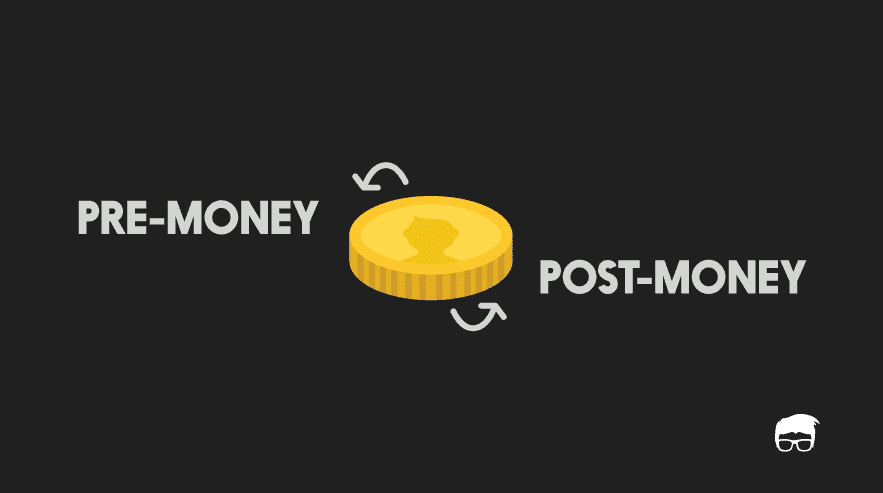As entrepreneurs, our ultimate goal is to create long-term, profitable growth for our businesses. Whether we are just starting out or looking to scale significantly, obtaining financing is a necessity. This is where the concepts of pre-money and post-money valuation come into play. Understanding the difference between these two valuations is crucial for attracting investors and securing the funding required for business growth.
In this article, we will delve into the intricacies of pre-money and post-money valuation, exploring how they are calculated and why they are important for entrepreneurs seeking investments. By the end of this article, you will have a clear understanding of these valuation methods and be well-equipped to navigate funding discussions with potential investors.
Pre-Money Valuation: Determining Value Before Investment
A pre-money valuation is the value of a business before any external funding is raised. It represents what the company is worth in its current state, solely based on its assets, potential, and market conditions. Entrepreneurs typically calculate pre-money valuation when they are looking for investments or preparing for the next round of funding.

Factors Affecting Pre-Money Valuation
Several factors come into play when determining the pre-money valuation of a business. Let’s explore some of the key elements considered by entrepreneurs and investors during this valuation process:
-
Market Conditions: The overall state of the market and industry trends can significantly impact a business’s pre-money valuation. Entrepreneurs need to assess how their company aligns with market demands and potential growth opportunities.
-
Valuations of Similar Businesses: Comparing the valuations of similar businesses in the industry provides valuable insights. This analysis helps entrepreneurs and investors gauge the competitive landscape and determine how their business stands in terms of value.
-
Pre-Money Revenue: For more mature businesses, pre-money revenue plays a crucial role in the valuation process. Revenue figures provide a tangible measure of a company’s current financial performance and potential for future growth.
Calculating Pre-Money Valuation

Calculating the pre-money valuation involves using various pieces of information and financial data. Entrepreneurs and investors utilize these inputs to arrive at a mutually agreeable valuation. Here’s a step-by-step breakdown of the calculation process:
-
Gather Investment Offers: When investors express interest in funding a business, they typically offer a specific amount for a certain percentage of ownership. It’s essential to compile these investment offers before proceeding with the valuation calculation.
-
Determine Post-Money Valuation: To calculate the pre-money valuation, we first need to determine the post-money valuation. This can be done by multiplying the investment amount by the inverse of the ownership percentage offered. For example, if an investor offers $500,000 for a 10% stake in the business, the post-money valuation would be $5 million ($500,000 divided by 10%).
-
Calculate Pre-Money Valuation: Once we have the post-money valuation, we can subtract the investment amount from the post-money valuation to obtain the pre-money valuation. In the previous example, the pre-money valuation would be $4.5 million ($5 million minus $500,000).
By following these steps, entrepreneurs can determine the pre-money valuation of their business, which serves as a starting point for investment discussions.
Post-Money Valuation: Assessing Value After Investment
While the pre-money valuation focuses on the value of a business before external funding, the post-money valuation takes into account the investments made. It represents the value of the business immediately after the most recent investment.
How Post-Money Valuation is Calculated
The post-money valuation is determined based on the investment terms and the investor’s perception of the business’s potential for growth. Let’s take a closer look at the calculation process:
-
Investment Offer or Terms: When an investor offers a specific amount of capital, they are essentially stating the value they see in the business. This offer or investment terms form the basis for calculating the post-money valuation.
-
Determining Ownership Percentage: To calculate the post-money valuation, we need to determine the ownership percentage associated with the investment offer. By dividing the investment amount by the post-money valuation, we can ascertain the ownership percentage.
-
Calculating Post-Money Valuation: Once we have the ownership percentage, we can calculate the post-money valuation by dividing the investment amount by the ownership percentage. For example, if an investor offers $500,000 for a 10% ownership stake, the post-money valuation would be $5 million ($500,000 divided by 10%).
The post-money valuation reflects the investor’s perception of the business’s value and growth potential. It serves as a benchmark for future investments and helps entrepreneurs gauge the scalability of their business.
Importance of Pre-Money and Post-Money Valuation
Both pre-money and post-money valuations play crucial roles in the funding process. Understanding their significance can help entrepreneurs navigate investment discussions and make informed decisions. Let’s explore the importance of each valuation in more detail.
Importance of Pre-Money Valuation
The pre-money valuation holds several key advantages for entrepreneurs seeking investments, especially in the early stages of business development. Here are a few reasons why pre-money valuation is important:
-
Attracting Investors: A well-calculated and reasonable pre-money valuation can attract potential investors. It communicates the growth potential and opportunity that the business presents, making it an attractive investment.
-
Seed Investment Opportunities: Pre-money valuations are particularly relevant for early-stage businesses that rely on seed investments. Each smaller investment contributes to the pre-money valuation, making the business more appealing to venture capitalists and angel investors.
-
Negotiating Favorable Terms: By understanding the pre-money valuation, entrepreneurs can negotiate ownership percentages and investment terms that align with their business goals. This negotiation power allows for more favorable terms with investors.

Importance of Post-Money Valuation
While pre-money valuation is crucial for attracting investments, the post-money valuation holds equal importance. Here’s why post-money valuation matters:
-
Scalability and Growth Potential: The post-money valuation represents the scalability and growth potential of a business. It provides insights into the value that investors see in the business and serves as a benchmark for future investments.
-
Return on Investment (ROI): For later-stage startups, the post-money valuation becomes even more critical. Investors, such as venture capitalists, expect a substantial ROI. The post-money valuation helps entrepreneurs evaluate their business’s ability to generate attractive returns for investors.
-
Public Offering and Shares: The post-money valuation becomes especially relevant for startups considering going public or selling shares beyond just venture capitalists. It sets the stage for future stock offerings and helps entrepreneurs plan for further growth and expansion.
Both pre-money and post-money valuations are integral to the funding process. By understanding their importance and utilizing them effectively, entrepreneurs can attract the right investors and secure the necessary funding for their businesses.
